Thinking of turning your basement into an office, drum practice room, library, kids study room, etc?.Then you need sound insulation for ceiling in the basement. I know the basement is the least special room in most homes.
Do you know that during the time of Coronavirus pandemic some doctors turned their basements into bedroom? Just to keep one of them alive to take care of the family in case the other gets infected and don’t make it.
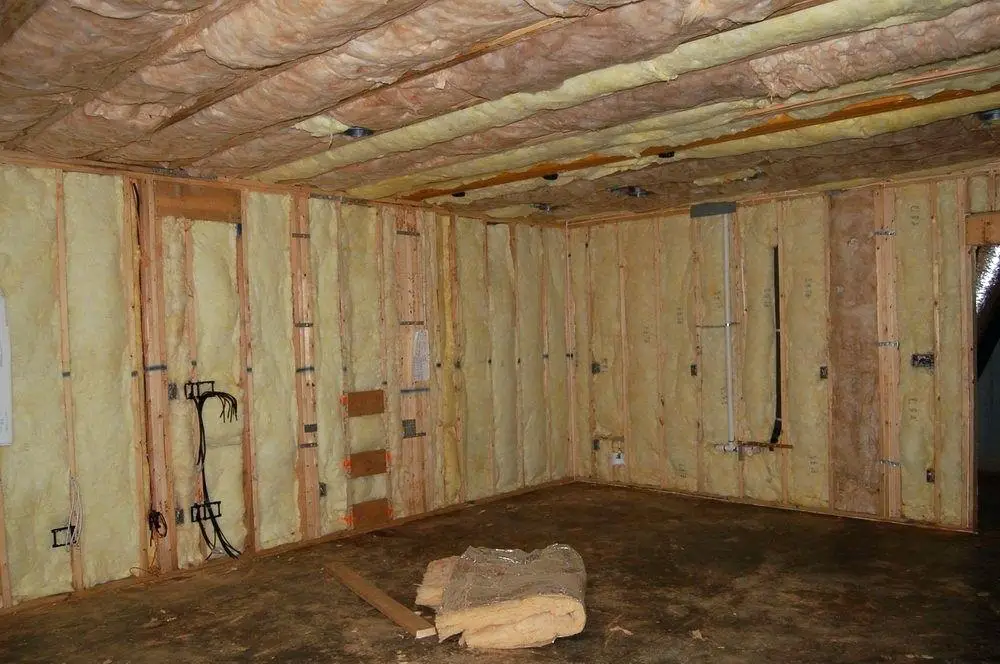
Many of us use our basement as a storeroom for the crappy things we don’t want people seeing around our home. But if you intend to now use it for a different purpose, you will need to soundproof the basement like any other room.
You might be wondering why do I need to soundproof the basement? well, the basement is mostly found underneath the ground floor and that means most of the noise made upstairs travels to the basement as well and the vise versa. If you were to be using the basement for drum practice or recording studio, all the sounds made there will travel to the upper rooms as well.
Type of Noise that can get into your Basement
There are two major types of noise that can get into the basement. These are impact noise and airborne noise.
Airborne noise is any kind of noise that travels via air. examples of such noise include television noise, loud shouting, playing music, etc. These kinds of noise when they hit a surface will usually bounce around but some of these noises will travel through it and eventually find their way into the basement.
Impact or structural noise is a type of noise that is created when one objects impacts another object thereby send vibrational sounds through the structures in contact with them.
Examples of such stomping feet, heavy footsteps, washing machine or dishwasher machine vibrating while in use.
Now that you know the type of noise that can enter the basement, let’s look at the main point of entry of these noises.
Most of the noise will enter the basement through the basement ceiling because it mostly underneath all the floors.
The focus should be on soundproofing the ceiling. and the floor that is above the basement ceiling.
If these two main places are taking care of properly, then the basement noise will drastically be reduced. The other places you might want to consider will be the door and the window.
The walls might not be a major concern if unless you are using the basement for activities that rather create loud sounds that can travel through the walls.
Anyway, let’s focus on the soundproofing ceiling of the basement for now.
Cheap Ways to Soundproof a Basement Ceiling
Soundproofing a basement ceiling doesn’t have to cost you an arm and a leg. You can reduce a lot of noise with some DIY techniques here I am about to share with you. There are easy to implement mostly by yourself or with the help of a friend.
1. Lay Carpets and Rugs on the Floor Above the Basement Ceiling
Basement ceilings are usual the floors of other rooms. These rooms can be used as the living room, kids’ playroom, the bedroom, kitchen, and others.
These rooms can be a source of different types of noises. Whether it is the heavy footsteps, the washing machine vibration or the loud stereo system playing music.
If quietness is what you seek in the basement, then it is important to soundproof the floor above the basement. To soundproof an existing floor is quite easy. You need t install some sound-absorbing or dampening materials on the floor.
This way when the sound is made in the room, it will get dampen before it passes into the basement through the ceiling.
To soundproof the floor, you need thick carpets and thick rugs and pads to serve as sound-absorbing materials on the floor.
You can use floor mats in conjunction with carpets and rugs. We use this rubber floor mat by Rubber-Cal for our floor and it comes well for us.
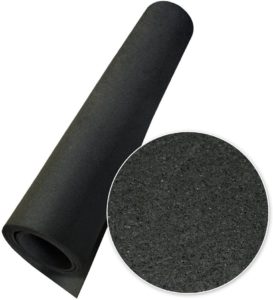
It comes in about 7 different colors to choose from and there are also different sizes to select depending on the size of the floor you want to use it for.
Its made here in the US and it’s a great value for the money. It’s easy to install and can be used for both temporary and permanent purposes.
This rubber floor mat will mute the footsteps of people moving about above the basement especially for floors that are made of tiles, hardwood, and hard surfaces. Sound travels through such surfaces easily.
You can also use the floor rug pads that have very thick backing to protect the floor and to dampen sounds on the floor.
These floor rugs are also decorative and they add a visual appeal to your room. Plus, you can choose the thickness and size of the rug to fit your surface perfectly. We have one in our living room and its amazing.
2. Install Soundproof Panels
Installing soundproof panels are a great and cheap way to soundproof your basement ceiling noise if it is something you are really serious about.
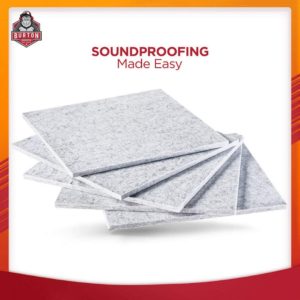
3. Rearrange the Furniture of the Room Above the Basement
4. Add Soundproof Mat to the Ceiling
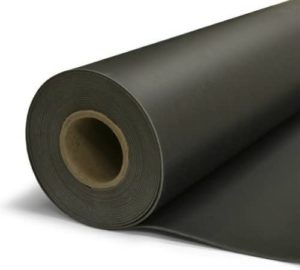
5. Rockwool Acoustic Mineral Wool Insulation
If you have an open ceiling that does not have drywall, you should first think of insulating the joist cavities. Regular ceiling insulation will still work fine, especially if you are soundproofing the basement ceiling on a low budget.
This acoustic insulation is a good option to use for the open ceiling as it will make a difference even if its a small bit.
This Rockwool acoustic mineral wool is great acoustic insulation as it acts as a soundproofing material fr the ceiling. It is cost-effective and very high in NRC rating, water-repelling, has a Class A fire rating and hydrophobic in nature.
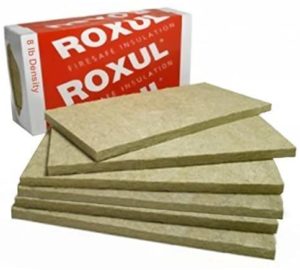
These acoustic insulation are compression fit products. You simply need to cut the size you need for each joist cavity then simply press it in between the joist.
6. Seal the Gaps and Cracks with Green Glue
As a ceiling age, cracks and gaps will eventually show up. These gaps are a gateway for air to pass through. As we already established above about the types of noise and the mediums the travel, air carries noise with it and that is a fact.
If these cracks and gaps are left unblocked, the noise will come in through them. That is why it is important to seal them with an acoustic sealant caulk.
I found this Green Glue soundproofing compound to work well for me. It is one of the most common and cost-effective soundproofing materials available.
The compound’s unique properties act as a damping material to dissipate the vibrations caused by sound waves as they travel through ceilings, walls, and floors.
6. Add Extra layer of Drywall with Green Glue Compound
Remember that a thicker material is hard for noise or sound to penetrate that a hollow or lighter material. Therefore add an extra layer of drywall with this soundproofing compound will increase the STC of the ceiling.
The green glue will act as a sandwich between the existing ceiling drywall and the new drywall to be installed.
The green glue work by converting the sound energy into heat energy and dissipate it. The method is one of the cheapest and practical soundproofing projects available.
Apply the green glue in between two drywalls and then use these two to soundproof the ceiling. By doing so, you are able to achieve better basement sound insulation.
7. Paint the Ceiling with Soundproof Paint
Soundproof paint is usually made of thick materials such as latex. These materials reflect sound back to the source, thus reducing the amount that gets transmitted.
Because it is very thick, soundproof paint can get rid of at least 30% of the sound waves passing through your basement ceiling.
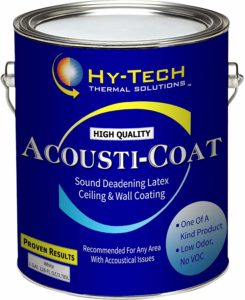
Plus, the paint will give the ceiling a good visual appeal. If you choose to paint the ceiling with the soundproof paint, applying a couple of layers of the paint will be best.
At least apply 3 to 4 layers to make it thicker and increase its soundproofing ability. It is worth mentioning that, soundproof paint alone is not effective on its own unless you use it in conjunction with other soundproofing methods.
It will only work for mild noise and not loud noise.
Final Words on Sound Insulation for Ceiling in the Basement
If you truly want to sound insulate your ceiling, you will have to realize that a bit of planning has to go into it. Haven read my recommendations above, it will be up to you to decide which of these soundproofing techniques will work best for you.
Another question you will want to ask yourself is, are you going to be using the basement regularly or occasional?. If you think you can cope with the noise for some days, that’s fine otherwise, you will need to do some ceiling soundproofing for your peace and quietness or to give others peace if you are the one going to be making the noise.
Combine more than one technique will be more effective than just one technique. Remember the more soundproofing mass you are able to add, the better the soundproofing will be.
Some products are expensive than others, you will have to set your budget and spend accordingly.
- How to Chew Quietly While Eating-Effective Tips - April 14, 2023
- Why is My Clutch Pedal Squeaking – Causes & Fixes - April 14, 2023
- Propane Tank Making Hissing Noise (Solved) - February 25, 2023
